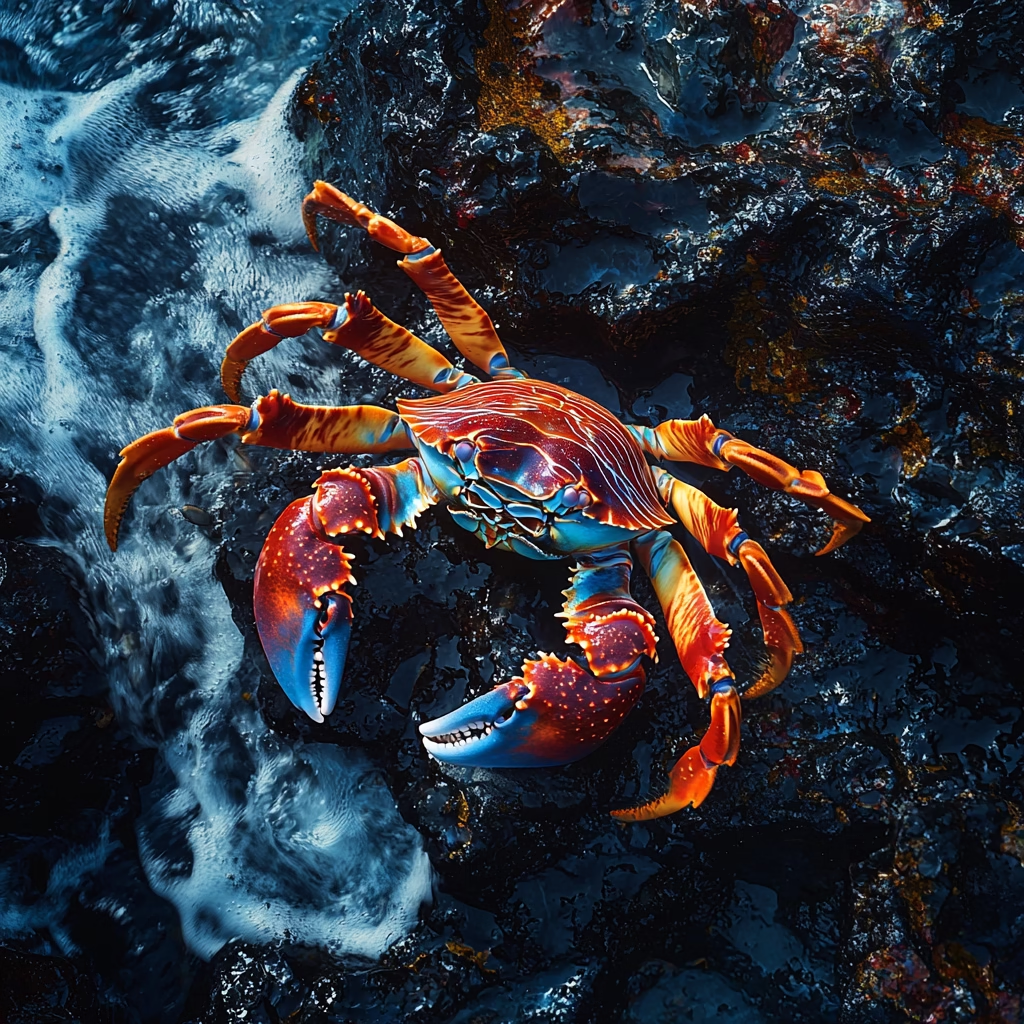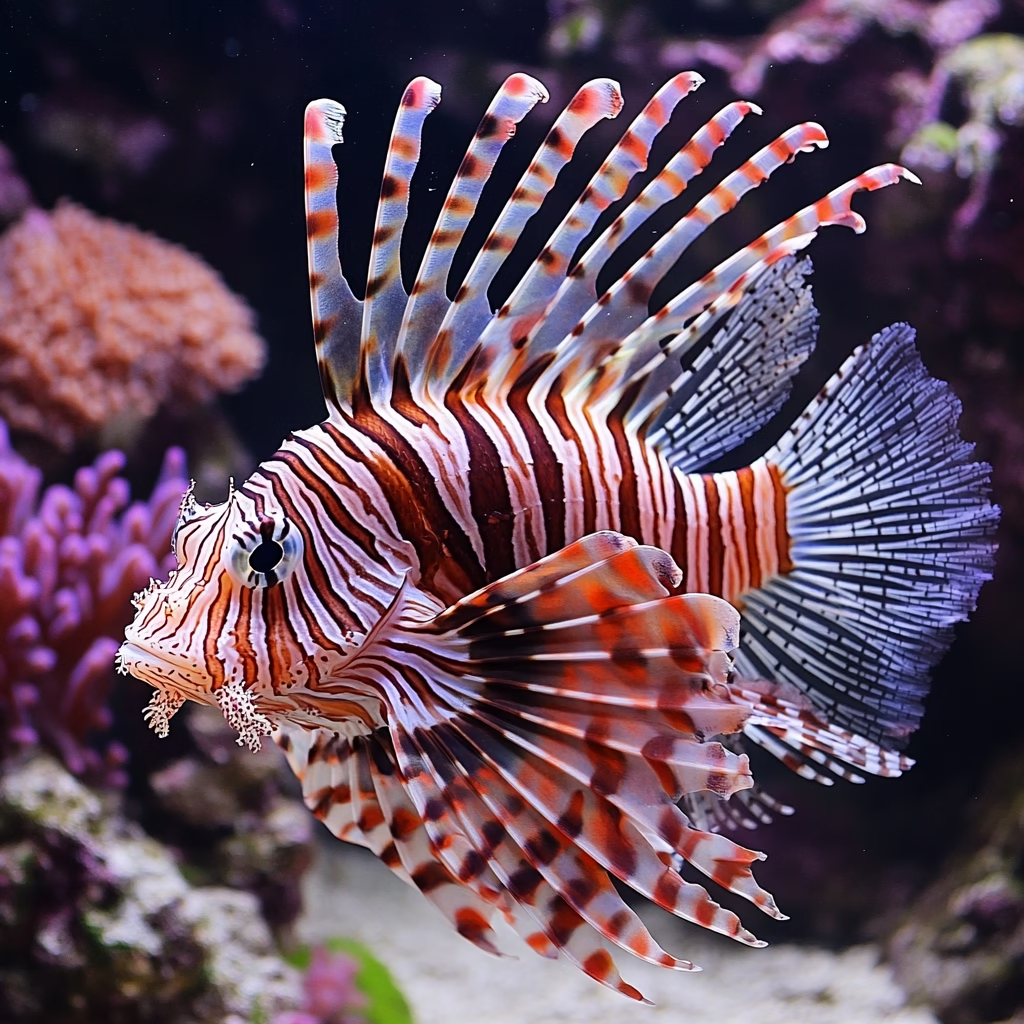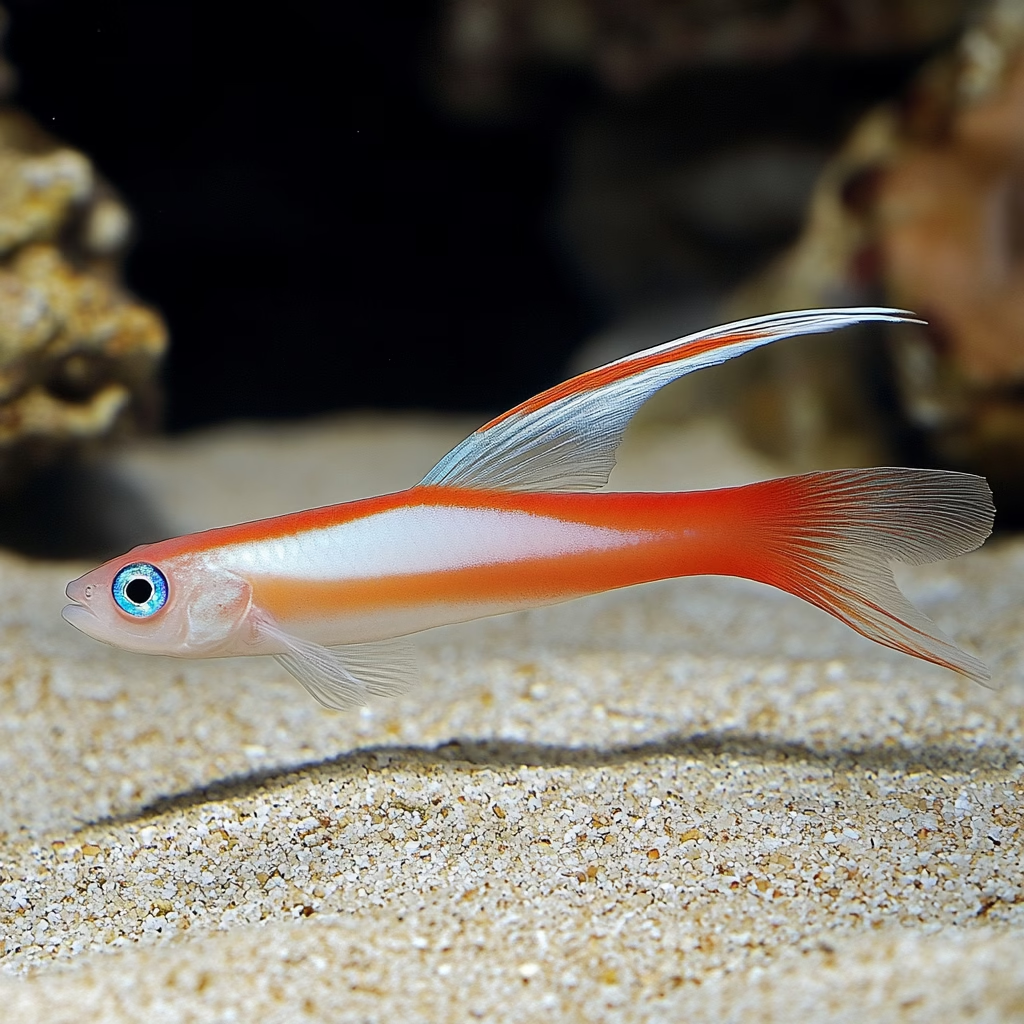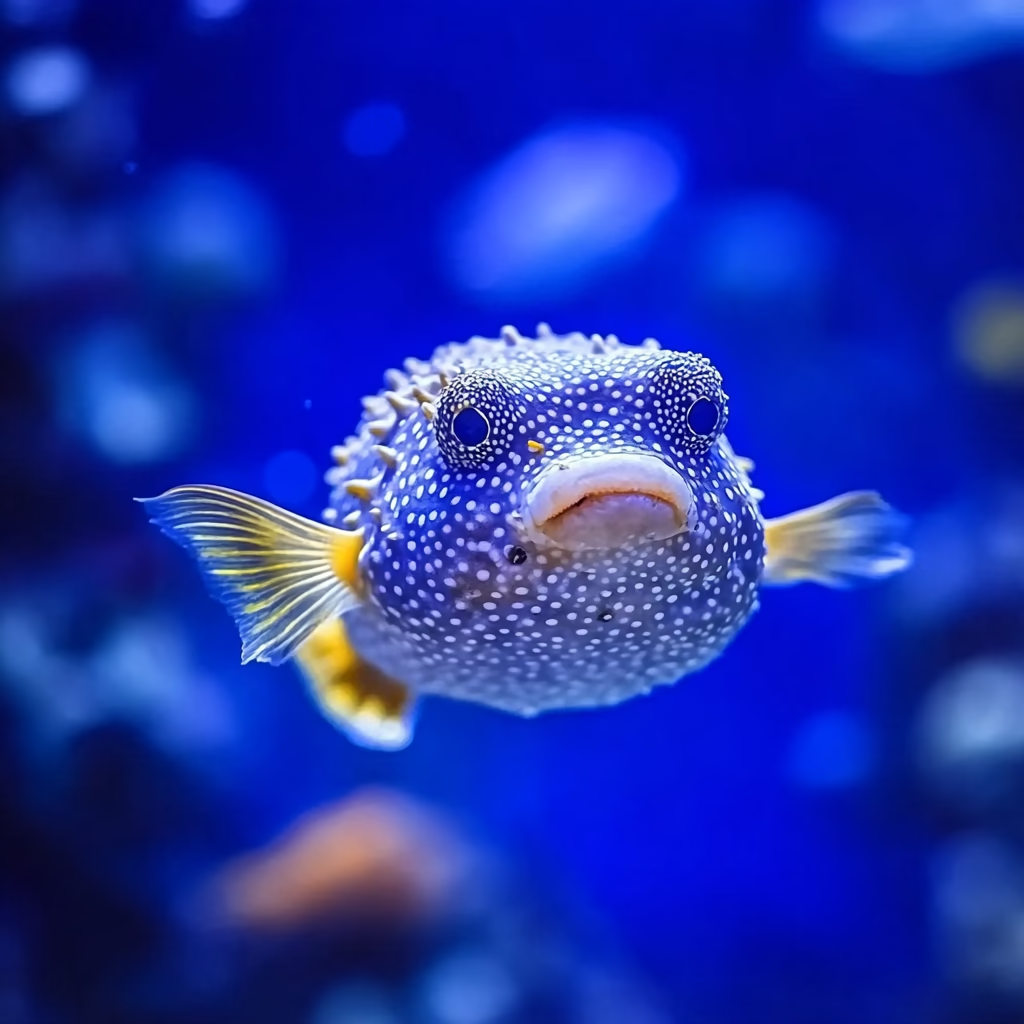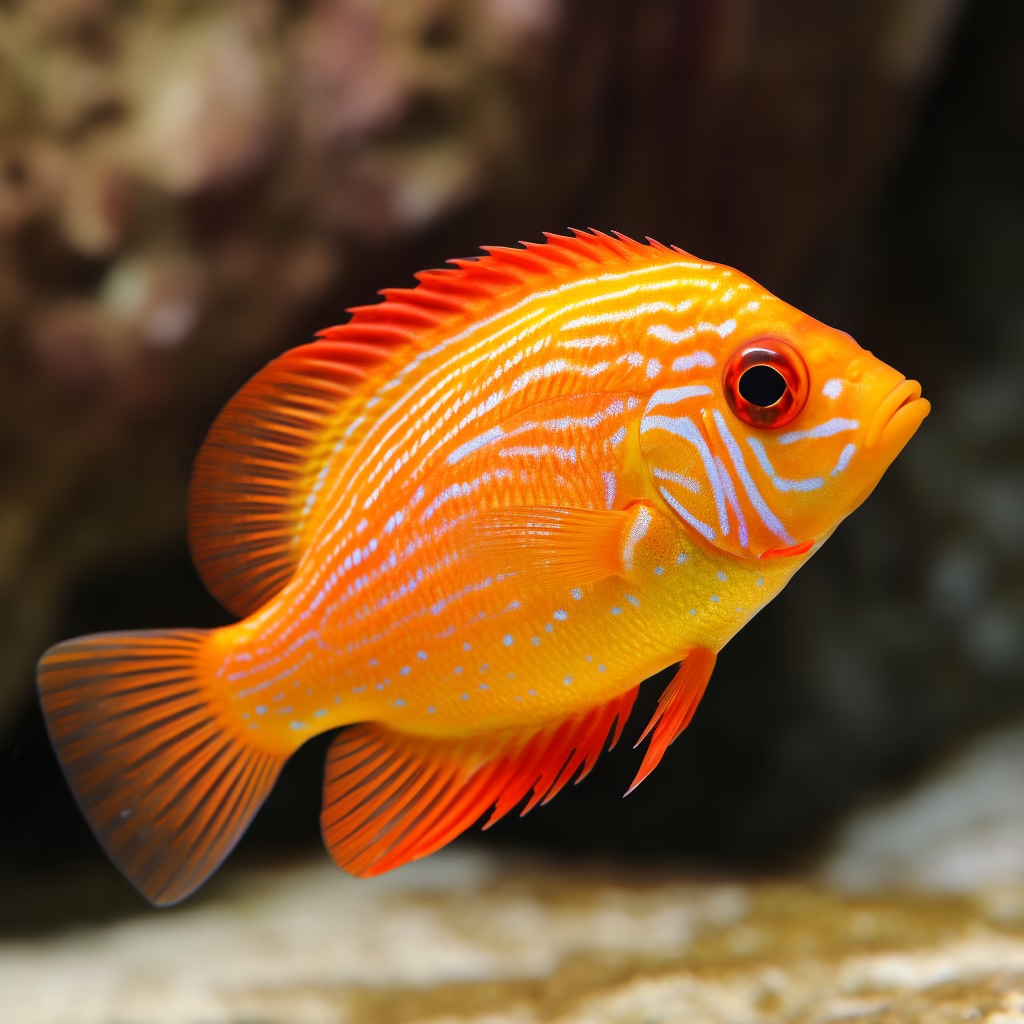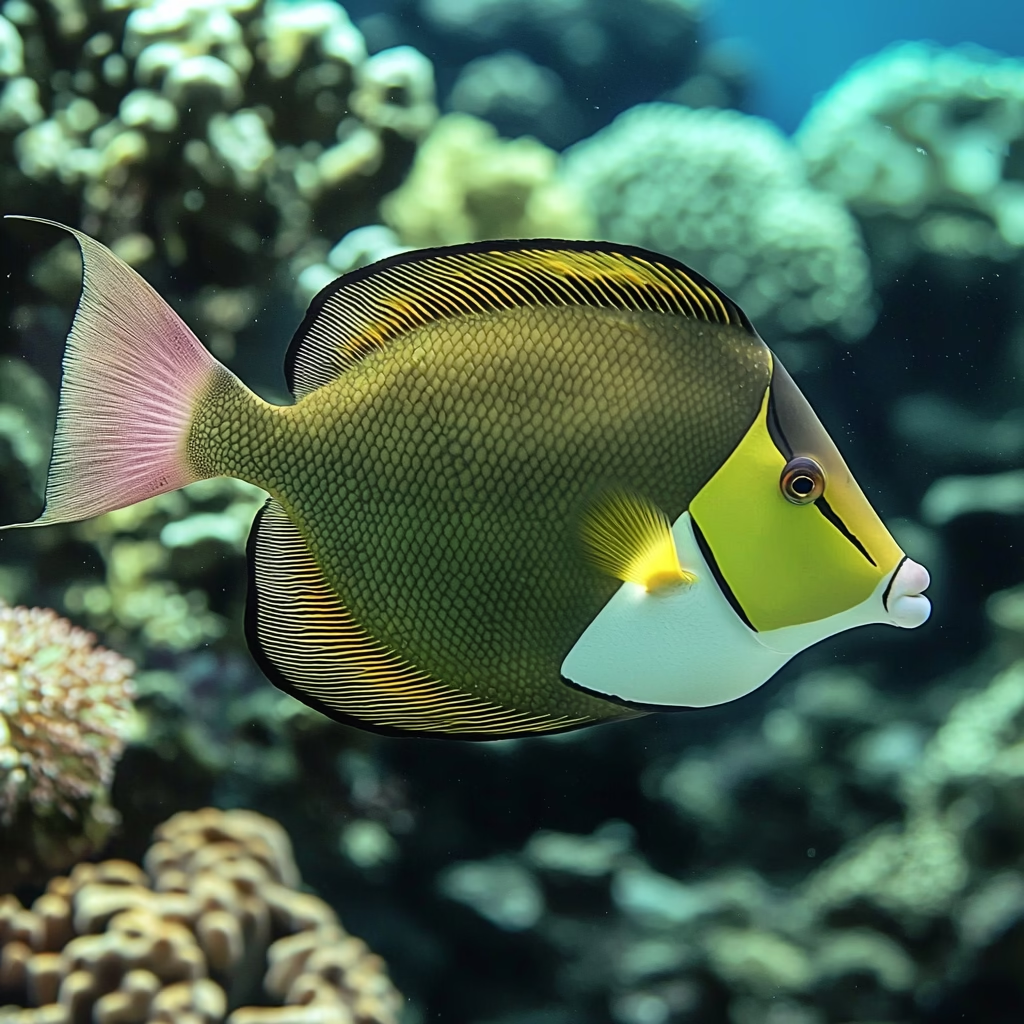Beyond their captivating appearance and athletic prowess, Sally Lightfoot crabs play a vital ecological role in their coastal habitats. As omnivorous scavengers, they help maintain the cleanliness and health of shoreline ecosystems while serving as an important food source for various predators. This article explores the fascinating world of these remarkable creatures, from their biology and behavior to their ecological significance and interactions with humans.
Physical Characteristics and Identification
Distinctive Coloration and Appearance
The Sally Lightfoot crab is immediately recognizable by its spectacular coloration, which changes dramatically throughout its life cycle. Juvenile crabs typically display a dark, mottled appearance that provides excellent camouflage against the dark volcanic rocks that often make up their habitat. As they mature, they transform into one of the most colorful crustaceans in the world.
Adult Sally Lightfoot crabs feature a brilliant combination of colors:
- The carapace (upper shell) ranges from bright red to orange and sometimes yellow
- Their legs can be vivid blue, purple, or red with yellow accents
- The underside often displays striking white or cream coloration
- Their eyes are mounted on stalks and are typically dark with contrasting surroundings
This vibrant coloration isn’t merely for show—it serves as a form of aposematic (warning) coloration, signaling to potential predators that they are not easy prey. The average adult has a carapace width of approximately 3-5 inches (8-13 cm), making them medium-sized among shore crabs.
Distinguishing Features from Similar Species
While their coloration makes adult Sally Lightfoot crabs relatively easy to identify, several related species can cause confusion, particularly in juvenile specimens. Key distinguishing features include:
- The distinctive red/orange carapace with blue-purple legs in adults
- Their relatively flat, round carapace compared to more angular related species
- The characteristic swift, sideways movement pattern
- Geographic location, as they have a specific distribution range
Related species in the Grapsidae family, such as the rocky shore crab (Grapsus tenuicrustatus) found in the Indo-Pacific region, share similar body structures but differ in coloration patterns and geographic distribution. For accurate identification, observers should consider both physical characteristics and location.
Habitat and Distribution of Sally Lightfoot Crabs
Geographic Range
Sally Lightfoot crabs enjoy a wide distribution along the western coasts of the Americas, from Mexico to Chile, including the Galápagos Islands in the Pacific Ocean. They are also found along parts of the eastern coast of the Americas, particularly in the Caribbean and parts of Brazil. This extensive range demonstrates their remarkable adaptability to various coastal environments, though they maintain specific habitat preferences within these regions.
The Galápagos Islands host particularly abundant and well-studied populations, where these crabs have become an iconic part of the archipelago’s unique fauna. Charles Darwin himself noted their presence during his famous voyage on the HMS Beagle, commenting on their agility and wariness.
Preferred Environments and Microhabitats
Sally Lightfoot crabs are quintessential inhabitants of the challenging intertidal zone, specifically favoring rocky shorelines where:
- Wave action is moderate to strong
- Rocks provide ample hiding places and surfaces for feeding
- Tidal pools create temporary aquatic habitats
- Algae and other food sources are abundant
These crabs are remarkably well-adapted to the constantly changing conditions of their environment, able to function both in and out of water. They typically avoid sandy beaches, preferring the firm footing and abundant crevices of rocky coastlines.
Within their habitat, Sally Lightfoot crabs exhibit clear zonation patterns, with younger individuals generally staying closer to the water in lower intertidal areas, while adults venture higher up the shoreline. This age-based distribution likely serves to reduce competition and provides appropriate protection for more vulnerable juveniles.
Behavior and Adaptations
Remarkable Agility and Movement
The Sally Lightfoot crab’s most famous characteristic is undoubtedly its exceptional agility and speed. These crabs can move in any direction—forward, backward, or sideways—with equal facility, reaching speeds that make them extremely difficult to catch. Their specialized legs feature bristles and gripping adaptations that allow them to maintain traction on wet, slippery surfaces where other animals would struggle to maintain balance.
This extraordinary mobility serves as their primary defense mechanism. When threatened, Sally Lightfoot crabs can:
- Change direction instantly
- Leap across gaps between rocks
- Rapidly retreat into narrow crevices
- Even jump into the water and swim short distances if necessary
Their movement is not only functional but almost artistic in its fluid precision, explaining why they were named after a dancer. This agility is particularly impressive considering they must coordinate eight legs while navigating highly irregular surfaces.
Feeding Habits and Diet
Sally Lightfoot crabs are opportunistic omnivores with a diverse diet that includes:
- Algae and other plant matter that grows on rocks
- Detritus and organic debris washed up by the tides
- Carrion from dead fish or other marine animals
- Small invertebrates when available
- Bird droppings and other nutrient sources
Their specialized mouthparts are adapted for both scraping algae from rocks and tearing apart more substantial food items. They play a crucial ecological role as shoreline cleaners, helping to remove decaying matter that might otherwise accumulate.
Interestingly, research has documented Sally Lightfoot crabs engaging in cleaning behaviors with marine iguanas in the Galápagos, where they remove ticks and other parasites from the iguanas’ skin—a rare example of mutualistic behavior between such different animal species.
Life Cycle and Reproduction
Mating Behavior and Reproduction
Sally Lightfoot crabs, like other brachyuran crabs, reproduce sexually with distinct mating behaviors. The mating season typically coincides with warmer water temperatures and can vary across their range.
The reproductive process involves several stages:
- Males actively search for receptive females, often engaging in competitive behaviors with other males
- Mating occurs after the female has molted, when her exoskeleton is still soft
- The male transfers sperm packets (spermatophores) to the female’s sperm storage organs
- Females can store this sperm for extended periods, using it to fertilize multiple batches of eggs
- Fertilized eggs are carried under the female’s abdomen, attached to specialized appendages called pleopods
A female carrying eggs is said to be “berried,” as the egg mass resembles small berries. Depending on size and age, females can produce between 50,000 to 120,000 eggs per brood and may produce multiple broods per year.
Development From Larvae to Adults
The life cycle of Sally Lightfoot crabs involves a complex metamorphosis through several distinct stages:
- Zoea Larvae: After hatching, typically during high tide or after rainfall when conditions favor dispersal, the eggs release tiny planktonic zoea larvae into the water column
- Megalopa Stage: After several molts and developmental changes in the open water, the larvae develop into megalopae with more crab-like features
- Juvenile Crabs: The megalopae eventually settle in the intertidal zone, preferring areas with smaller rocks and more protection
- Growth Through Molting: Like all crustaceans, Sally Lightfoot crabs grow by periodically shedding their exoskeleton (molting) and growing a larger one
- Maturation: The distinctive color change from dark juvenile to bright adult occurs gradually through successive molts
Juveniles are particularly vulnerable to predation, which explains their more cryptic coloration and tendency to hide in lower intertidal areas. As they grow and develop their speed and agility, they gradually venture into more exposed areas of the shoreline.
Ecological Significance
Role in Coastal Ecosystems
Sally Lightfoot crabs function as important ecological components of rocky intertidal ecosystems in several ways:
- Algae Control: By grazing on algae, they help prevent overgrowth that might otherwise smother other organisms
- Detritus Processing: Their consumption of organic debris accelerates nutrient cycling and prevents accumulation of waste material
- Prey Species: They serve as food for numerous predators, transferring energy up the food chain
- Bioturbation: Their movement and feeding activities disturb sediments and surfaces, creating microhabitats for other species
Research suggests that areas with healthy Sally Lightfoot crab populations typically show greater overall biodiversity, indicating their positive influence on ecosystem health.
Interactions with Other Species
Sally Lightfoot crabs engage in a complex web of interactions with other species in their habitat:
- Predator-Prey Relationships: They are hunted by birds (particularly herons and gulls), octopuses, larger fish, and some mammals
- Competition: They compete with other shore crabs and invertebrates for food and space
- Mutualism: As mentioned earlier, they have been observed cleaning parasites from marine iguanas in a mutualistic relationship
- Commensalism: Smaller invertebrates sometimes benefit from the crabs’ feeding activities without affecting them
In the Galápagos, these crabs have co-evolved with unique island species, developing specialized relationships not seen elsewhere in their range. Their bright coloration serves as a warning to potential predators, while their speed and agility make them difficult targets even for specialized hunters.
Human Interactions and Cultural Significance
In Local Cultures and Tourism
Sally Lightfoot crabs have become culturally significant in many coastal communities throughout their range:
- In the Galápagos, they are iconic wildlife attractions, featured prominently in tourism materials
- Local folklore in various regions includes stories and myths about these colorful creatures
- Their name itself reflects cultural connections, allegedly referencing a Caribbean dancer known for speed and agility
- They appear in local art, crafts, and photography throughout their native range
While not typically harvested for food in most regions (unlike many other crab species), they nonetheless hold economic value through nature tourism, particularly in protected areas where visitors come specifically to observe and photograph wildlife.
Conservation Status and Threats
The Sally Lightfoot crab is not currently listed as endangered or threatened. Their wide distribution, abundant populations, and adaptability have helped them maintain stable numbers throughout most of their range. However, they do face several anthropogenic challenges:
- Habitat Degradation: Coastal development, pollution, and shoreline alteration can reduce suitable habitat
- Climate Change: Rising sea levels and changing ocean temperatures may affect their intertidal habitat
- Ocean Acidification: As crustaceans with calcified exoskeletons, they could potentially be affected by increasing ocean acidity
- Localized Collection: In some areas, collection for the aquarium trade or as fishing bait occurs, though not at levels currently considered threatening
Conservation efforts primarily focus on habitat protection and the establishment of marine protected areas where these and other intertidal species can thrive undisturbed. The Sally Lightfoot crab’s presence in many protected areas, including the Galápagos Marine Reserve, helps ensure the long-term survival of healthy populations.
Scientific Research and Discoveries
Studies on Adaptation and Evolution
The Sally Lightfoot crab has become an important subject for scientific research in several areas:
- Biomechanics: Their remarkable locomotion abilities have inspired studies on movement across challenging surfaces
- Evolutionary Biology: Their color changes from juvenile to adult provide insights into the evolution of warning coloration
- Physiology: Their ability to function both in and out of water makes them excellent subjects for studying adaptations to amphibious life
- Behavioral Ecology: Their complex interactions with other species, particularly in the Galápagos, offer windows into co-evolutionary processes
Recent research has begun exploring their sensory systems, particularly how they detect and respond to potential threats so quickly. Their almost preternatural ability to detect approaching humans or predators suggests highly developed visual or vibration-sensing capabilities.
Potential Applications and Future Research
Ongoing and future research on Sally Lightfoot crabs shows promise in several applied fields:
- Robotics: Their movement mechanics are studied by engineers developing robots that can navigate challenging terrains
- Materials Science: The water-repellent properties of their exoskeleton could inspire new waterproof materials
- Conservation Biology: As indicator species for intertidal ecosystem health, monitoring their populations can provide insights into environmental changes
- Climate Change Research: Their responses to changing temperatures and sea levels may help predict broader ecosystem impacts
As molecular and genetic tools become more accessible, researchers are beginning to investigate the genetic basis for their colorful appearance and remarkable physical capabilities, potentially opening new avenues for understanding the genetic underpinnings of adaptation.
Conclusion: The Enduring Fascination of Sally Lightfoot Crabs
The Sally Lightfoot crab embodies nature’s remarkable ability to combine practical adaptation with stunning beauty. From their eye-catching coloration to their almost supernatural agility, these shoreline acrobats continue to captivate scientists and casual observers alike. They represent a perfect example of how evolution can produce specialized organisms exquisitely adapted to challenging environments.
As ambassadors of the intertidal zone—that dynamic boundary where land and sea perpetually negotiate—Sally Lightfoot crabs remind us of the rich biodiversity found at ecological edges and transition zones. Their continued presence along the shores of the Americas serves as both a biodiversity indicator and a source of wonder for those fortunate enough to observe them in their natural habitat.
Whether scuttling across volcanic rocks in the Galápagos or navigating the tide pools of Mexico’s Pacific coast, the Sally Lightfoot crab’s brilliant colors and lightning-quick movements offer a vivid reminder of life’s remarkable diversity and the specialized niches that evolution continually explores and refines.

